
The second Neptunia game is, for many people, where the series really found its feet and truly defined what it wanted to be. And it’s hard to argue with that; while Hyperdimension Neptunia mk2 still had some rough edges here and there, it’s much less of a hard sell to newcomers these days than the first game, and on top of that it expanded the regular cast of characters considerably with a host of fan favourites.

Released in 2011 and once again developed as a collaborative affair, this time between Idea Factory, Compile Heart, Nippon Ichi Software, Gust Corporation, 5pb. and Comcept, Hyperdimension Neptunia mk2 shakes up a number of things about what was then still a fledgling series.
Most notably, it opens with the cast of the original game being captured and in need of rescue, placing the new “Candidate” characters — actually sisters of the four goddesses from the original game — squarely in the driving seat, with Neptune’s sister Nepgear taking the role of protagonist this time around.
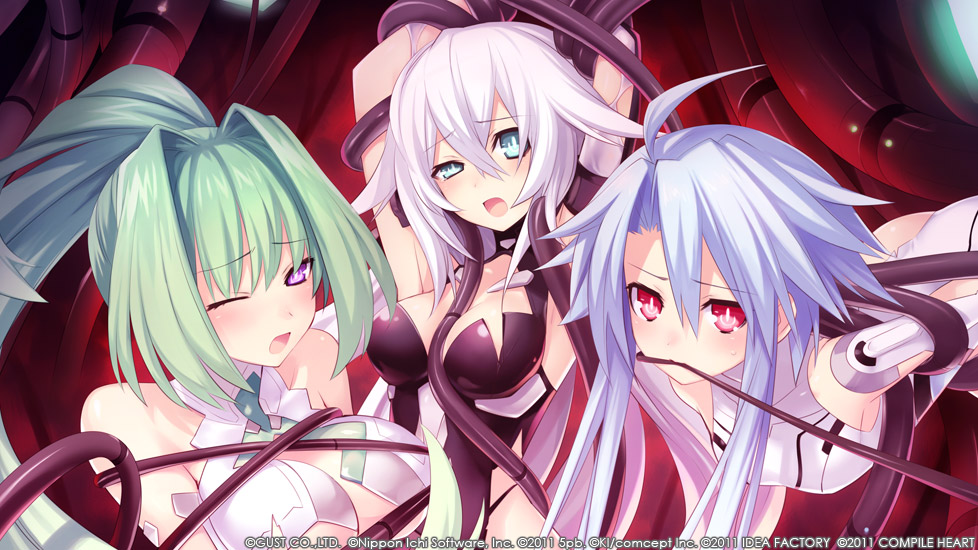
Rather charmingly, Nepgear is represented as almost a polar opposite to her sister; while Neptune is brash, loud and impulsive, Nepgear is thoughtful, quiet and gentle. A running joke in the game is that she is uncomfortable in the role of protagonist — a position that Neptune adopts with aplomb any time she gets the opportunity — but one of the more pleasing character arcs across the game as a whole is the way in which Nepgear gradually develops her confidence and shows the potential to be a strong leader in her own right. This is a theme that is explored further in Neptunia: Sisters vs. Sisters.
Hyperdimension Neptunia mk2 also starts a series trend of various installments actually unfolding in different dimensions from one another and thereby not necessarily being canonical “sequels” to one another. This is quite a wise move, as it always means that newcomers to the series can jump in at pretty much any point and have a good time — though those who have followed along since the beginning will also get the benefit of seeing how the depictions of these characters have grown and changed over time.
Like the first game, Hyperdimension Neptunia mk2 features a story that is largely an allegorical anti-piracy message. This time around, rather than focusing on a single villain — “Magiquone” in Japanese and “Arfoire” in the west, both references to devices that enable piracy on console platforms — the game focuses on a syndicate of villains known as ASIC, or the Arfoire Syndicate of International Crime. (Their name, in turn, is based on the Application-Specific Integrated Circuit that has been used in many console mod chips over the years.)
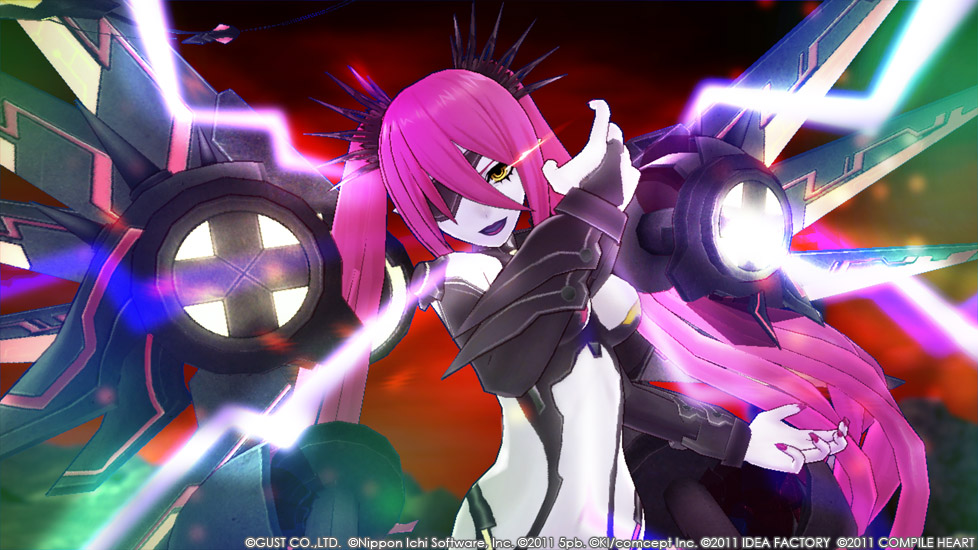
The references don’t stop there, either. The leaders are known as the Criminals of the Free World, or CFWs (a reference to Custom FirmWares for gaming devices, which often enable piracy) and one of the main henchmen is a Pikachu-esque creature known as Warechu, after “warez”, a slang term for pirated software. Each of the CFWs represent a negative trait of those involved in gaming — Magic represents fanboyism, Judge represents developer frustration at games not selling well, Trick represents the wrath of gamers unable to beat difficult challenges and Brave represents those unable to afford the latest games.
While all these references are pretty on-the-nose, Hyperdimension Neptunia mk2 is noteworthy for making all its cast more than just their core traits. For example, there’s a great subplot between PSP personification Uni and Brave where the pair of them come to understand and respect one another despite being on opposite sites, and Trick is one of the most utterly loathsome villains to ever show their face in any video game ever, being not only an entitled little shithead but also clearly a paedophile, given how he treats the Nintendo DS personifications Rom and Ram.
Hyperdimension Neptunia mk2 is arguably also the installment that began to truly play up the yuri aspects of the series that form a core part of its overall feel to this day — even going so far as to refer to the relationship values between the girls as “Lily Ranks”. For the unfamiliar, “yuri” can be translated as “lily”, and there’s most certainly some fledgling girl-on-girl romances in this one, particularly between protagonist Nepgear and Lastation’s Uni.
In fact, Hyperdimension Neptunia mk2 remains one of the most popular and well-known titles in the series primarily for its narrative. While relatively short in comparison to some of the other games in the series, there are a considerable number of different endings available according to how the “shares” values end up by the end of the game; canonically, “shares” represent the belief each of the setting’s nations have in their respective goddesses, while mechanically they can be manipulated by selectively completing quests in different regions.
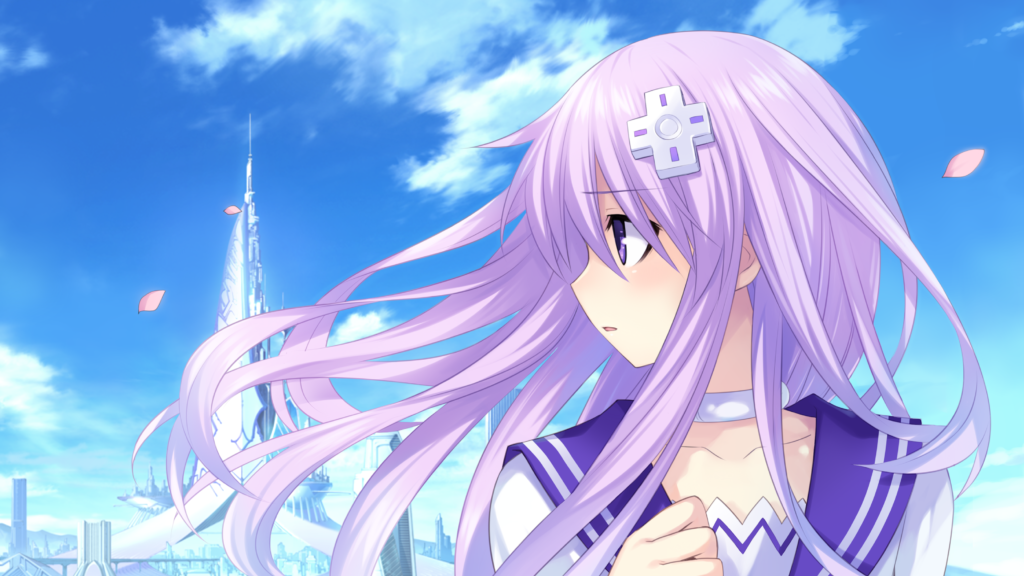
The most notorious of Hyperdimension Neptunia mk2’s endings is known as the “Conquest” ending, which is fairly out of character for the series in terms of how bleak and dark it is. Technically it’s what you would probably call a “bad” ending — though given the amount of effort it takes to get, which is considerably more than any of the others available, it’s quite an achievement to see it.
But I’ll save the details of that for those who are yet to experience it; it’s quite something. For now, let’s turn our attention to the mechanical aspects of Hyperdimension Neptunia mk2, which is another area where the game radically reinvents itself in comparison to its predecessor.
While the game still primarily unfolds by selecting dungeons from a map and then exploring them from a third-person perspective, the similarities end there. Random encounters have been ditched in favour of a “symbol attack” system, whereby the character you’re controlling can swing their weapon at an enemy who is visible in the field in order to gain an advantage when starting combat; likewise, if an enemy strikes you in the back, you’ll start at a disadvantage.
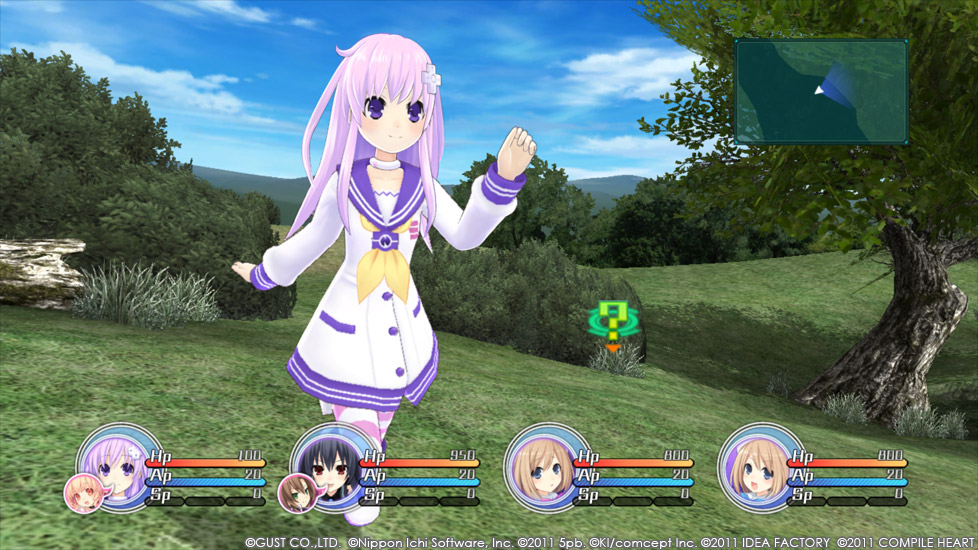
Hyperdimension Neptunia mk2 was a relatively early title to adopt this system, but it’s fairly standard practice in many modern RPGs that make use of a separate battle screen these days. It works well, and it means that if you’re just popping into a dungeon to pick up some crafting ingredients, you can fairly easily avoid most fights you can’t be bothered with, while at the same time minimising tedious running around in circles to trigger encounters if you do want to grind for experience, money or drops.
Once into combat, further differences become apparent. The game is still turn-based, but now each character can freely move around within an area determined by their Move statistic, allowing you to position them in relation to the enemies. This is important, because most weapons have an area of effect, allowing you to hit multiple foes with a single strike, and you’re also more likely to hit enemies if you strike them from the sides and back. As you might expect, the enemies also have access to these mechanics, so it’s as important to think about your allies’ formation for defensive purposes as it is positioning yourself for the optimal assault.
The game features a variation and a simplification of the original Hyperdimension Neptunia’s combat system. Individual moves are still performed using a stock of action points, but these can be stored up in various ways. Characters also have moves that use a separate stock of skill points; these are triggered as specific abilities rather than part of a combo, and allow for attacks such as elemental spells and healing.
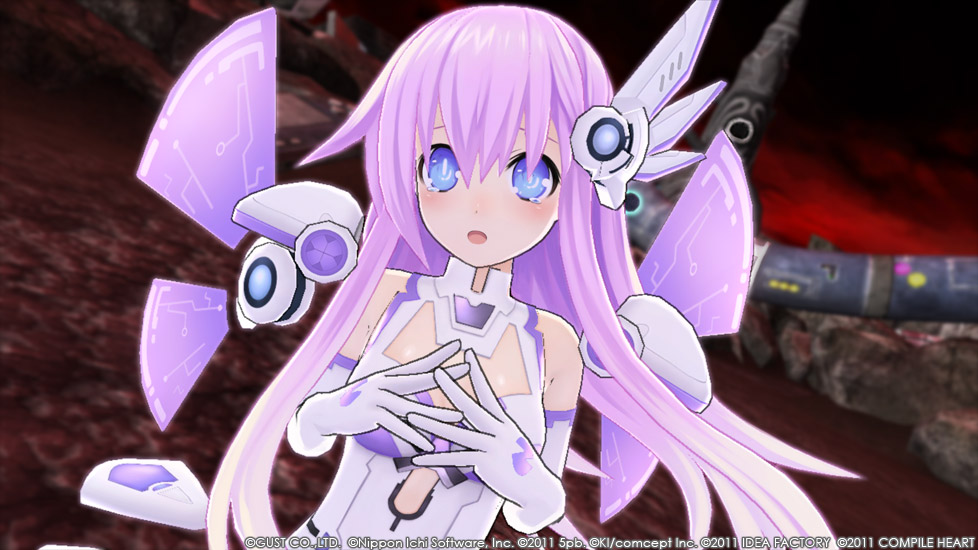
Combo attacks in Hyperdimension Neptunia mk2 fall into three main categories: Rush attacks emphasise on increasing the hit count, which in turn can improve the overall damage of the combo; Break attacks focus on decreasing the enemy’s Guard meter, which, when emptied, leaves the enemy much more open to taking significant damage; and Power attacks are, as the name suggests, the most powerful. As characters level up, they learn various different types of attack which can be chained together into custom combos, and as long as they have the action points to spend, they can keep unleashing combos.
It’s not the most refined system — indeed, follow-up Hyperdimension Neptunia Victory not only refined the system seen here into arguably its best form, but also formed the basis of several subsequent games — but it does work considerably better than the original game’s idiosyncratic mechanics. To put it another way, while I very much enjoyed the weird combat of the first Hyperdimension Neptunia, the battle system in Hyperdimension Neptunia mk2 is more accessible to newcomers while still feeling distinct from other RPGs.
That, I think, has always been one of the key things about the Neptunia series as a whole. It’s recognisable in that it’s an RPG, but it does a lot of things quite differently to the expectations that people hold when they hear the word “RPG”. There’s no wandering around towns, for example; outside of dungeons, all interaction takes place in Gamindustri’s Twitter substitute, where you’ll get to read the entertaining musings of not only the main characters but also some recurring NPCs.
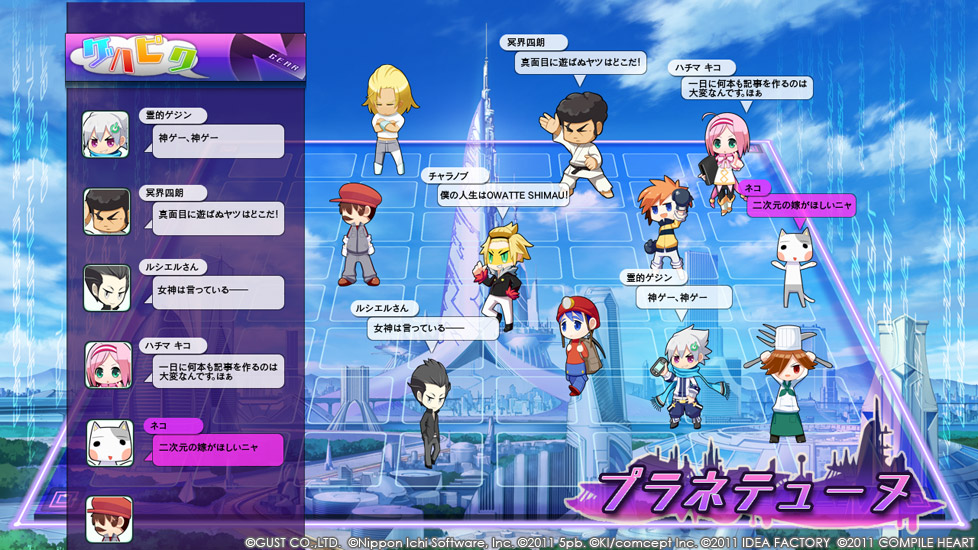
Likewise, the dungeons of Hyperdimension Neptunia mk2 are self-contained rather than being transitional areas that “lead” somewhere; more often than not, your main aim when getting into a dungeon is simply to reach its deepest point and defeat a boss or see an event. From there, the story will advance, perhaps sending you to another dungeon, and the game progresses in this way. It’s a bit of a shift from those who prefer RPGs with a greater sense of “coherence”, for want of a better word, but it works well for the energetic format of the game.
All in all, Hyperdimension Neptunia mk2 is a well-liked installment in the series for good reason. It introduces some popular characters, it features solid mechanics, it has a great story and one of the most notorious endings in the whole series. Were it not completely superceded by its revamped version Hyperdimension Neptunia Re;Birth 2, which we’ll talk about in good time, I’d recommend it unreservedly; as it stands, however, the latter version is not only easier to find today thanks to its release on PC, but it’s also a superior experience.
Disclosure: Some links in this article may be affiliate links, which means we may earn a small commission if you make a purchase after clicking on them. This is at no additional cost to you and helps support Rice Digital!









